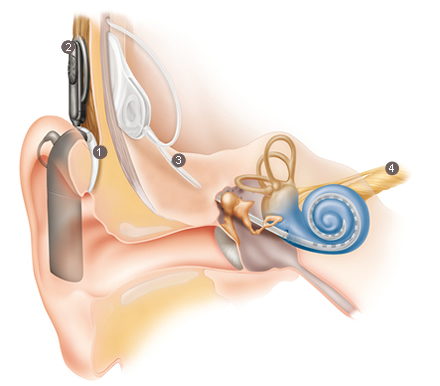Spiking Cochlear Implants
How is sound transported to the brain? This question is central to the design of cochlear implants that enables patients with severely damaged hearing to hear again. In these patients, the hair-cells that detect sound are damaged to the point of uselessness: cochlear implants aim to mimic the effect these hair-cells have on the nerve-cells they connect to. In joint collaboration with LUMC, we study both how we can account for the observed behavior in the nerve-cells in response to stimulation by the implant and also how we can optimally stimulate these nerves for patients to best understand sounds. The aim of this research is to improve sound experience for patience, and in particular improve their perception of th dynamic range of sounds: loud and soft.



